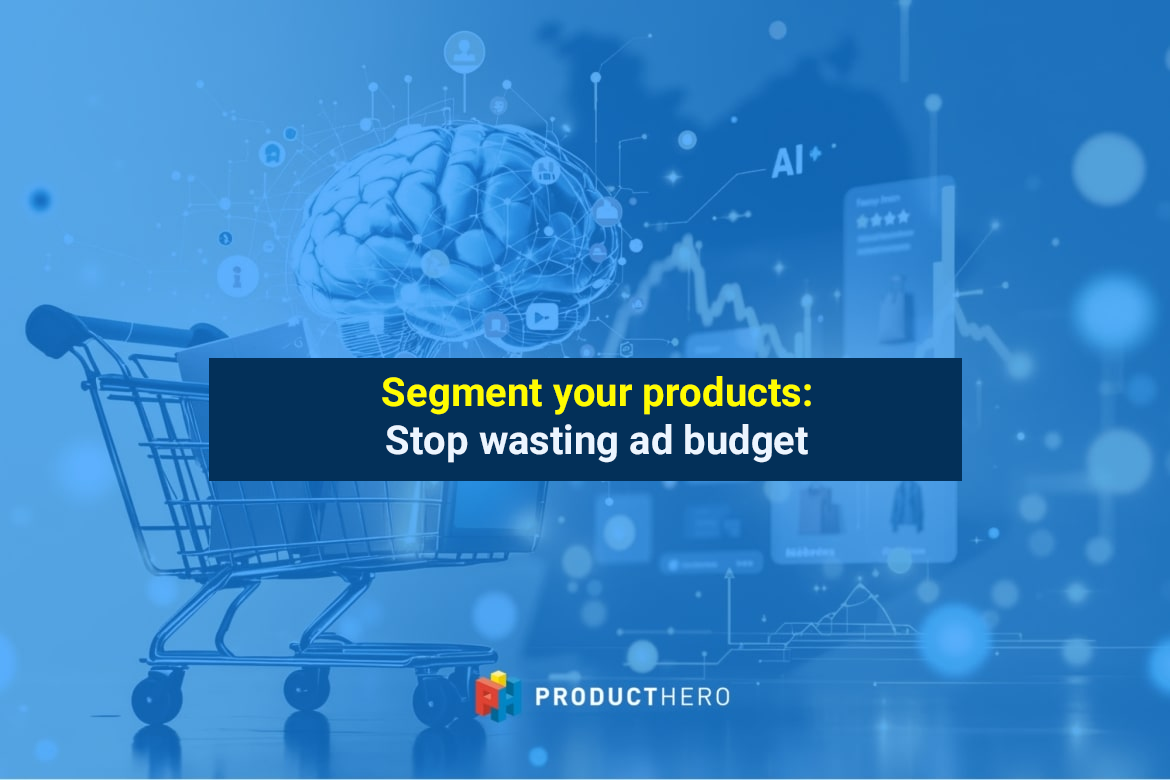The importance of product segmentation for shopping ads on Google
Written by
Editorial TeamPublished on
Discover how product segmentation can boost your Google Shopping Ads by focusing on top performers and cutting wasted spend, just like Deiters, who gained €500K in seasonal revenue (Ad).

Commercial collaboration
Article written by Mark Grasmayer, Head of Marketing at Producthero
Germany’s ecommerce market is one of the largest in Europe, with over 49,000 active webshops competing for shoppers’ attention. Online marketplaces remain dominant in Germany: they captured 57 % of total e‑commerce revenue, and continue gaining ground. In this crowded space, it is surprising how many retailers overlook one of the simplest, and perhaps crucial, ways to improve campaign results: product segmentation.
According to a study on product performance on Google Ads by Producthero, on average, only 10% of a retailer’s product catalog generates the majority of revenue from Shopping ads. At the same time, up to 60% of products remain nearly invisible in search results. Even more concerning, about half of ad spend often goes toward items that never convert.
Why product segmentation matters
In many campaigns, all products are treated equally. Bids, budgets, and priorities are set at a broad level by the performance marketer, meaning high-performing items share the same treatment as those that rarely get clicks. This approach makes it almost impossible to direct budget where it drives the most revenue.
By segmenting your product catalog based on performance, profitability, or seasonal relevance, you can:
- Allocate budget more effectively to top converters.
- Reduce wasted ad spend on low-margin or low-demand items.
- Gain clarity on what is truly driving your Shopping Ads performance.
Segmentation allows you to act on actual performance data, making every ad euro work harder.
Four Product Categories You Should Know
Producthero’s Labelizer strategy categorises products into four clear groups based on performance and profitability. You don’t need the tool to set this up, if you run small campaigns it is possible to do this setup manually. This makes it easier to decide where to invest, where to cut back, and where to experiment.
1. Heroes: Your top-performing products that generate the most conversions and revenue. These deserve the highest bids, advertising budgets and most visibility.
2. Sidekicks: Products with potential but that need a push, such as better titles, images, or bidding strategies. Focus on these with optimizing the product content.
3. Villains: High spend but low conversion products that drain your budget. They require either optimisation or a reduction in visibility. If you lower your ad budget for this group, you can spend more on your best performers.
4. Zombies: Products with very few impressions and no real contribution to revenue. These are candidates for pausing or restructuring in your feed.
Using this framework, you can create separate campaigns for each category, adjusting bids, budgets, and priorities accordingly.
Overcoming Tracking and Data Gaps
One challenge in segmentation is incomplete or inaccurate tracking data, especially with privacy restrictions and attribution limitations. As outlined in Reducing the Impact of Tracking Issues, Producthero Labelizer uses both click and impression data to maintain segmentation accuracy, even when conversion data is partially missing. This ensures that your Heroes stay visible and your Villains stop wasting budget. Make sure that your data is correct before applying the Labelizer as a strategy.
Case Study: Deiters’ €500K Carnival Revenue Boost
Deiters, one of Germany’s largest costume retailers, faces an extreme seasonality challenge during Carnival season. Demand surges in the weeks leading up to the festivities, but competition for ad space also intensifies.
Using Producthero Labelizer, Deiters segmented its product feed months in advance. Carnival costumes and accessories were tagged as Heroes, allowing the company to:
- Increase bids for top Carnival products with proven sales.
- Move low-converting items into the Villain category to free up budget.
- Activate the Zombie products by pushing more budget into them.
- Spot Sidekicks and push them into Hero territory through bid adjustments and better creatives.
The result was a €500,000 revenue increase during the Carnival period, achieved with spending a bit more while increasing the visibility of total products seen with 87,5%. The most gains came from focusing budget on the right products at the right time, a textbook example of how segmentation amplifies seasonal opportunities in the German ecommerce market.
Before you start: Make sure you have enough data
Before applying product segmentation, it is important to ensure your Google Ads campaigns have collected enough performance data to make reliable decisions. Segmenting too early, with only a small volume of clicks or conversions, risks misclassifying products. A longer data collection period provides a clearer picture of which items are true Heroes and which belong in the Sidekick, Villain, or Zombie categories.
Final thoughts: Segment your campaigns to be competitive
Product segmentation is not just a “nice to have” in Google’s Performance Max or Shopping campaigns. It is a necessity for any retailer who wants to stop wasting ad spend and start scaling profits. By combining performance data, seasonality insights, and margin analysis with clear categories like Heroes, Sidekicks, Villains, and Zombies, you can ensure that your top products get the visibility (and budget) they deserve making your more competitive compared to the marketplaces in Germany.
If you are ready to see the impact for yourself, explore how tools like Producthero Labelizer can simplify segmentation and put your best products front and center.
***


